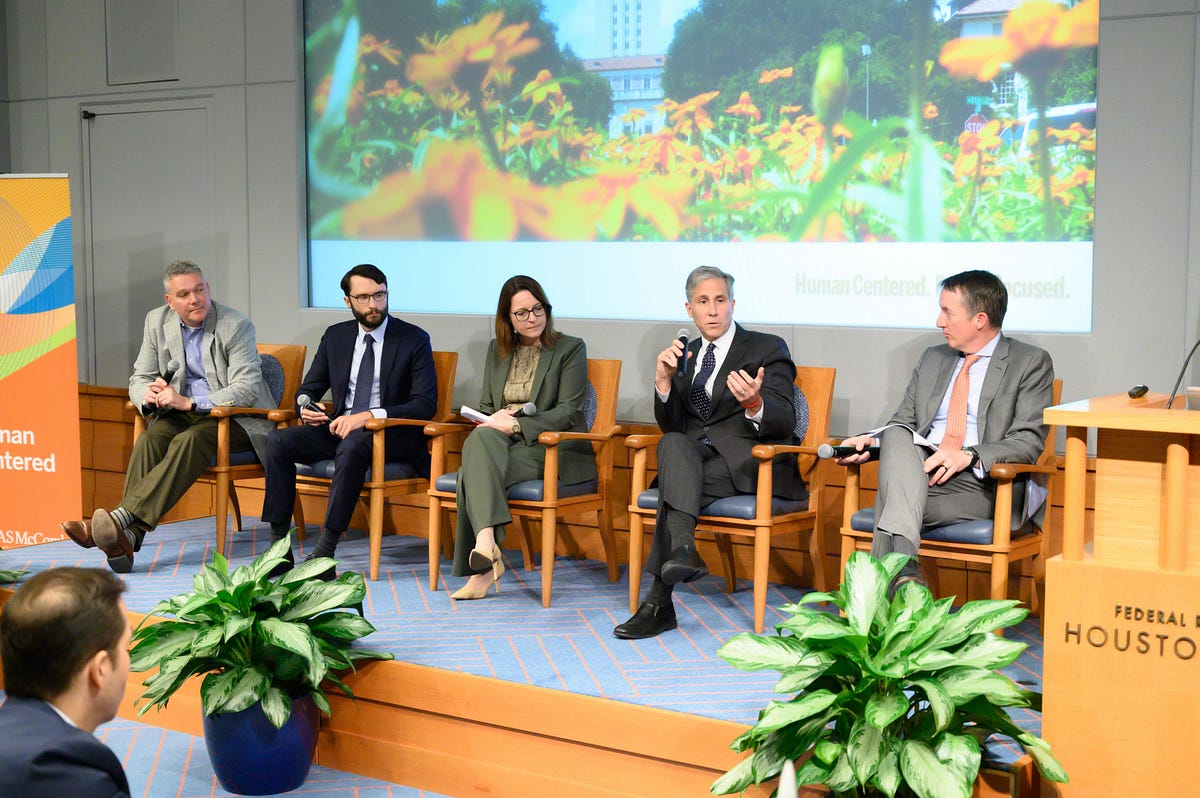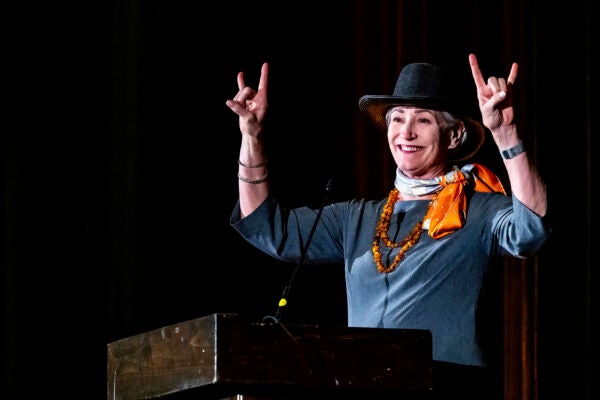Future Prospects
Experts say state is poised for economic growth in 2020.

In early 2020, as trade uncertainty had begun to subside but before the coronavirus had begun affecting markets worldwide, Texas’s economic prospects for the year looked promising, according to panelists at McCombs’ Business Outlook series. The state’s top economists and business executives gathered in January and early February in Austin, Dallas, Houston, and San Antonio.
They predicted that job growth in Texas would rise slightly — from 2% last year to 2.2% in 2020. Federal Reserve Bank of Dallas speakers Pia Orrenius, Keith Phillips, and Robert Steven Kaplan said passage of the United States-Mexico-Canada Agreement should help global growth, which was as weak last year as it has been since 2009.
Still wild cards are the election outcomes, problems with Boeing, and coronavirus concerns, but the Fed panelists agreed that the strongest residual headwind was a tight labor market caused in part by a decline in immigration.
Orrenius said Texas was a standout in economic growth, and Austin was again the city with the fastest economic growth in the state. Brett Hurt, CEO and co-founder of data.world, a certified B corporation and the world’s largest collaborative data community, said the city was poised for more growth, with record rounds of startup funding last year.
In other news close to home, the general economic uptick during the past decade helped grow the University of Texas-Texas A&M University Investment Management Company endowment from $13 billion in 2009 to $38 billion today, said Britt Harris, CEO and chief investment officer.
Real estate still strong
Mary Hager, co-founder and co-CEO of Thackeray Partners, a diversified private equity real estate company based in Dallas, said the market is solid. “Demand for apartments is very good, because there is a lot more student debt now, a lot of people who don’t have savings, and people are getting married and starting families later,” she said. “But it’s not just youngsters driving the demand. We’re seeing a higher propensity to rent across every age cohort.”
Warehouses are also in high demand, thanks to e-commerce, she said. “It takes three times the warehouse space to execute an e-commerce business than it does for traditional retail.” And with e-commerce comes a growing pressure to shrink delivery times, Hager added. “So, all the tenants want to be closer to population bases, and that’s driving a lot of demand in infill locations.”
It follows that real estate allocations are also up, according to Mike Lafitte, global chief executive officer of CBRE’s advisory services business. “Commercial real estate is a massive asset class and it’s growing,” he said. Twenty years ago, real estate was only about 5% of their investable assets, he reported. Today it’s closer to 10%.
Riding technology’s waves
Analytics and data enjoyed a banner year in 2019, according to Hurt, who said he is watching proliferation of cloud-based services and hoping confidence in the technology grows.
“Migration to the cloud has been really slow, and it’s because people are so terrified of data ever leaving on-premise, especially in health care,” he said. “That has really stunted innovation.”
The health care technology that is advancing is telemedicine, said Bryan Grundhoefer, chair of McCombs’ Health Care Advisory Council and president of WellMed Medical Management.
“Texas was pretty far behind on that curve, and they only recently passed legislation that allowed for televisits to occur, but we’re trying to get caught up to that,” he said. In California, some groups report more than 50% of patient visits being done through some form of televisit, he said.
In the current technological climate, only companies that stay focused on their strengths can thrive, according to Phil Green, chairman and chief executive officer of Cullen/Frost Bankers Inc. and Frost Bank.
Green said today’s disruptors in banking include a growing list of direct online banks specializing in higher interest rates, no branches, and limited services.
But he said his advice on dealing with disruption applies more universally: “We focus on improving customer experience as opposed to just cost reductions, and we’ve found that cost reductions will follow. You have to focus on your strengths, because you can’t spend your resources on everything.”
—Judie Kinonen
About this Post
Share:


